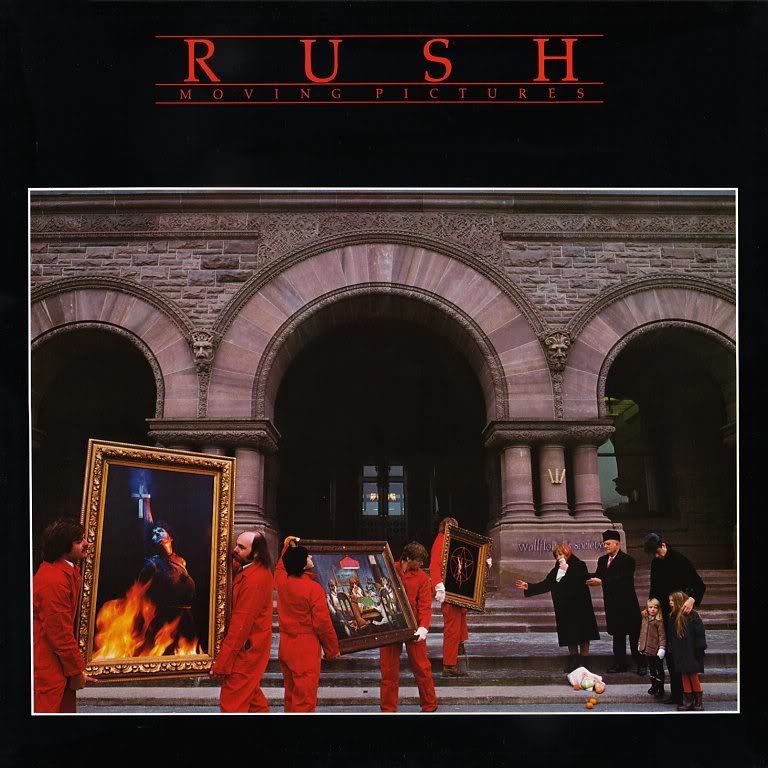
Moving Pictures (1981)

1.Tom Sawyer
2.Red Barchetta
3.YYZ
4.Limelight
5.The Camera Eye
6.Witch Hunt
7.Vital Signs
This is the one. The pinnacle. The gold standard. Moving Pictures isn’t just a fan favorite—it’s the album. The kind of record that leaves virtually no room for debate. Even among the most contrarian of Rush diehards, it’s rare to find anyone who doesn’t view this as the band at their absolute peak. Cohesive, confident, polished, and razor-sharp in every way imaginable.
It picks up exactly where Permanent Waves left off, right down to the production values. The sonic landscape is nearly identical—crisp, tight, beautifully layered—but everything here just feels dialed in a little tighter. The songs hit harder, the ideas land with more clarity, and the band sounds more in sync than ever before. The fact that they chose to perform the entire album live on their 2011 Time Machine tour tells you everything you need to know.
Things launch, of course, with Tom Sawyer. Even if you’re not a fan, you know this track. It never actually cracked the Top 40, but for whatever reason, it managed to sneak onto mainstream radio and stay there. It’s the one Rush song nearly everyone has heard, and to this day, it’s the only one they played at every single show. The overplay may have dulled its edges a bit for longtime fans, but the song remains a masterclass in everything the band does well: jagged rhythms, soaring synths, ferocious guitar lines, and lyrics that somehow feel both cryptic and profound. If you didn’t like this one, there’s a good chance the Rush catalog simply wasn’t going to be for you.
Following immediately is Red Barchetta, a fan favorite that marries sci-fi storytelling with nimble, evocative musicianship. Then comes YYZ, a rhythmic instrumental tour de force named after the Toronto airport code (and, in classic Canadian fashion, the letter z is pronounced “zed”). This one has long since earned its stripes as the band’s greatest instrumental, no small feat given the competition.
Next up is Limelight, arguably the band’s most accessible song—melodic, introspective, and still thunderously effective. It’s one of those rare cases where the lyrics (dealing with the isolations of fame) match the musical tone perfectly. The Camera Eye follows and serves as the album’s lone “epic”—an eleven-minute meditation on the contrast between city life in New York and London. For years, fans begged for its return to the live set, and when it finally made a comeback in 2011, the band admitted they’d forgotten just how much fun it was to play.
From there, things wind down with two final pieces. Witch Hunt, long considered the “studio” cut too complex to play live, eventually made its way into the concert repertoire thanks to advances in technology. It’s moody, textured, and provides a darker, more cinematic atmosphere. Vital Signs closes things out with a quirky, twitchy blend of reggae-inflected rhythms and electronic flourishes—a sneak preview, perhaps, of where the band would head next.
While the group would go on to make plenty of great music over the following decades, Moving Pictures was, by nearly all accounts, the summit. It’s the album where everything came together—musicianship, songwriting, production, and vision—all at once. Some fans bailed after this one, claiming the magic faded as the band shifted gears. But most stuck around, grateful to witness the trio evolve in real time.
Go back to the main page
Go To Next Review